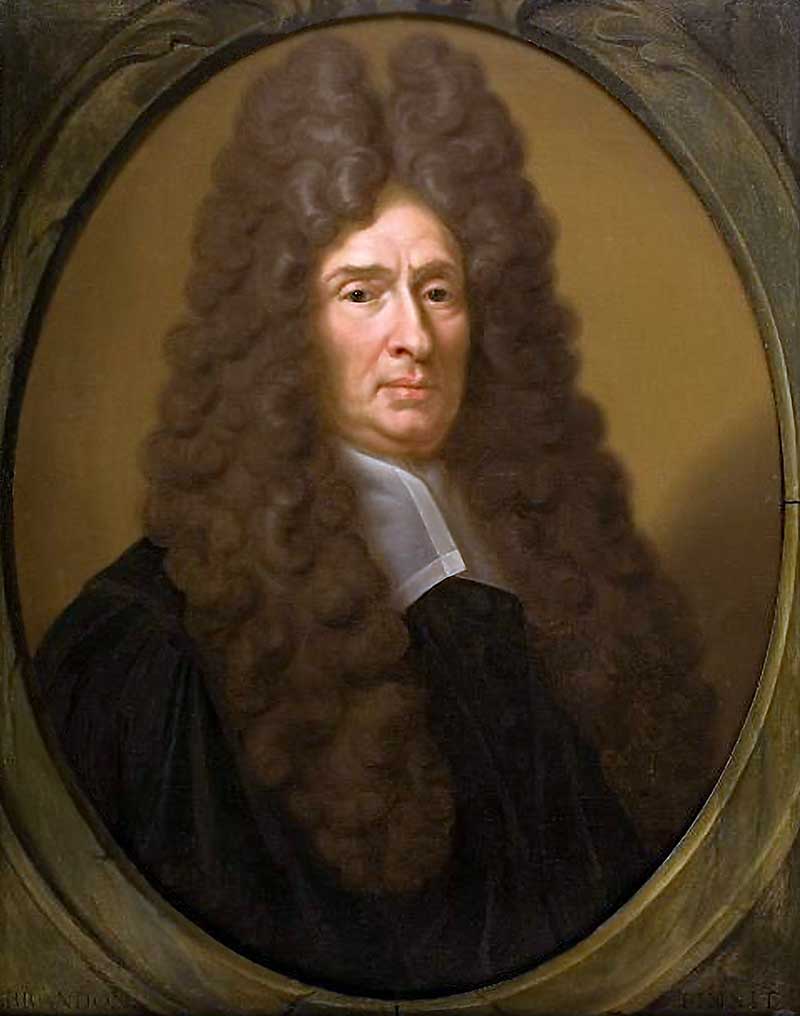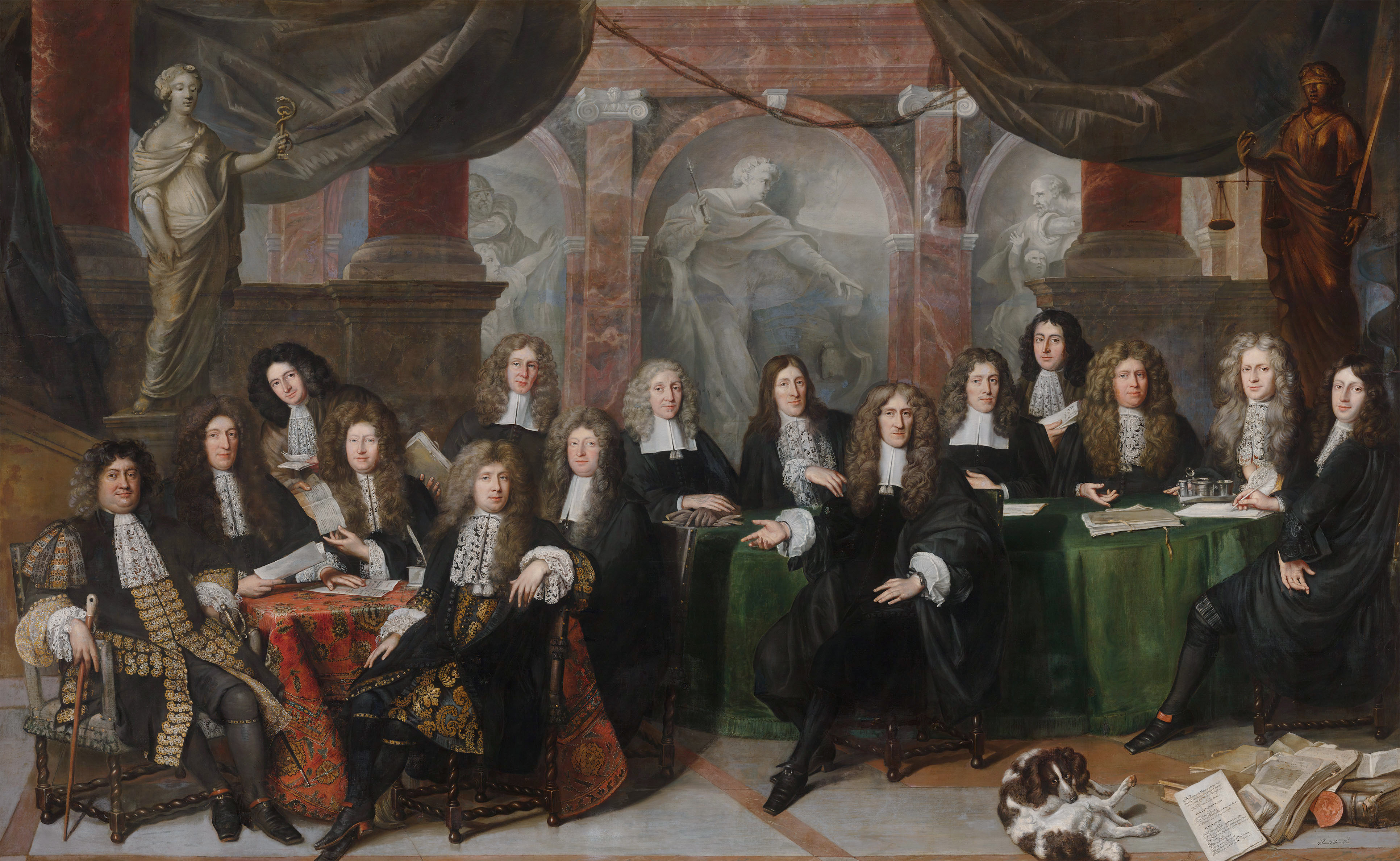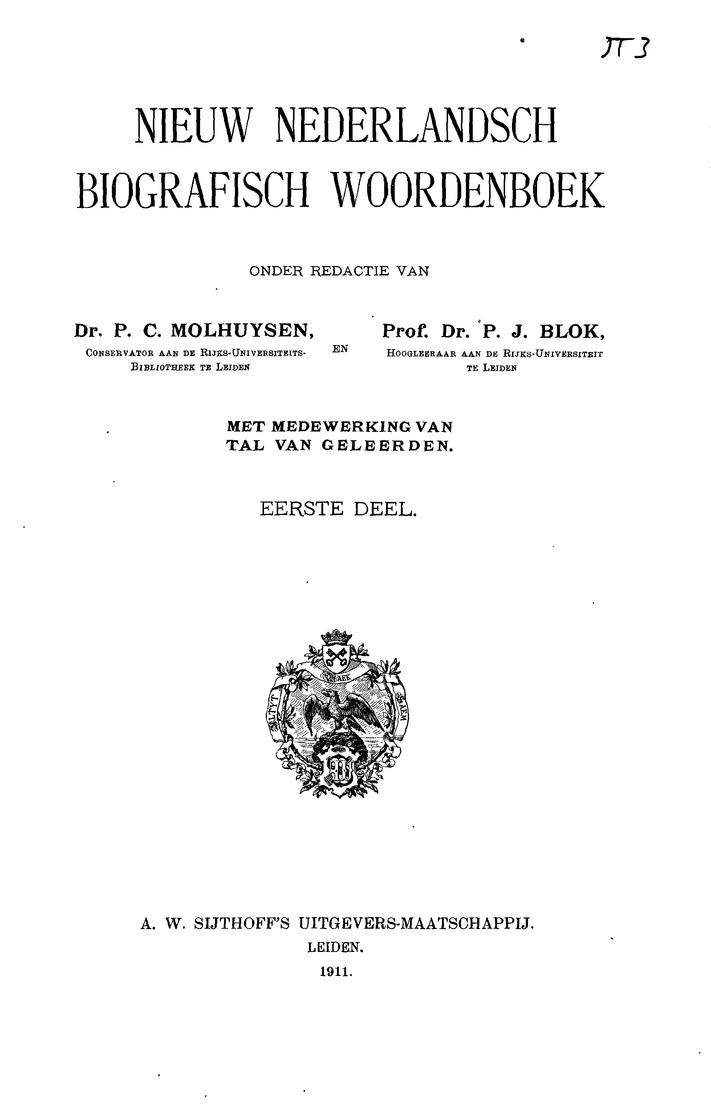|
Henrik Van Limborch
Hendrik van Limborch (9 March 1681 – 3 February 1759) was a painter and engraver from the Northern Netherlands. Limborch was born in The Hague as the son of a lawyer and became the pupil of Jan Hendrik Brandon, Robbert Duval, Jan de Baen and Adriaen van der Werff.Hendrik van Limborch in the NNBW Limborch is known for portraits and historical allegories and died in The Hague The Hague ( ; nl, Den Haag or ) is a city and municipality of the Netherlands, situated on the west coast facing the North Sea. The Hague is the country's administrative centre and its seat of government, and while the official capital of .... Gallery File:Artemisia II Queen of Caris taking poison by Hendrick van Limborch.jpeg, Artemisia II Queen of Caria File:Portret van een onbekende vrouw, RP-P-1878-A-1239.jpg, Portrait of an unknown woman File:Vrouw met parfumvaasje, RP-P-OB-46.321.jpg, Woman with perfume vase References * Hendrik van Limborch in the RKD 1681 births 1759 dea ... [...More Info...] [...Related Items...] OR: [Wikipedia] [Google] [Baidu] |
The Hague
The Hague ( ; nl, Den Haag or ) is a city and municipality of the Netherlands, situated on the west coast facing the North Sea. The Hague is the country's administrative centre and its seat of government, and while the official capital of the Netherlands is Amsterdam, The Hague has been described as the country's de facto capital. The Hague is also the capital of the province of South Holland, and the city hosts both the International Court of Justice and the International Criminal Court. With a population of over half a million, it is the third-largest city in the Netherlands, after Amsterdam and Rotterdam. The Hague is the core municipality of the Greater The Hague urban area, which comprises the city itself and its suburban municipalities, containing over 800,000 people, making it the third-largest urban area in the Netherlands, again after the urban areas of Amsterdam and Rotterdam. The Rotterdam–The Hague metropolitan area, with a population of approximately 2.6&n ... [...More Info...] [...Related Items...] OR: [Wikipedia] [Google] [Baidu] |
Northern Netherlands
The United Provinces of the Netherlands, also known as the (Seven) United Provinces, officially as the Republic of the Seven United Netherlands (Dutch: ''Republiek der Zeven Verenigde Nederlanden''), and commonly referred to in historiography as the Dutch Republic, was a federal republic that existed from 1579, during the Dutch Revolt, to 1795 (the Batavian Revolution). It was a predecessor state of the Netherlands and the first fully independent Dutch nation state. The republic was established after seven Dutch provinces in the Spanish Netherlands revolted against rule by Spain. The provinces formed a mutual alliance against Spain in 1579 (the Union of Utrecht) and declared their independence in 1581 (the Act of Abjuration). It comprised Groningen, Frisia, Overijssel, Guelders, Utrecht, Holland and Zeeland. Although the state was small and contained only around 1.5 million inhabitants, it controlled a worldwide network of seafaring trade routes. Through its trading com ... [...More Info...] [...Related Items...] OR: [Wikipedia] [Google] [Baidu] |
Jan Hendrik Brandon
Jan Hendrik Brandon or Jean Henri Brandon (1660–1714) was a Dutch painter from France. Brandon joined the Confrerie Pictura in 1696 and became known for portraits. He became director of the academy in The Hague in the period that Jan van Gool attended classes there in 1703. He moved to Utrecht in 1708, where he later died. in the RKD
The Netherlands Institute for Art History or RKD (Dutch: RKD-Nederlands Instituut voor Kunstgeschiedenis), previously Rijksbureau voor Kunsthistorische Documentatie (RKD), is located in The Hague and is home to the largest art history center i ...
References [...More Info...] [...Related Items...] OR: [Wikipedia] [Google] [Baidu] |
Robbert Duval
Robbert is a Dutch form of the masculine given name Robert. People with the name include: * Robbert A.J. Agerbeek (born 1937), Indo Dutch boogie-woogie and jazz pianist * Robbert Andringa (born 1990), Dutch volleyball player * Robbert Baruch (born 1967), Dutch politician * Robbert-Kees Boer (born 1981), Dutch short track speed skater * Robbert van de Corput (born 1988), Dutch house DJ known as "Hardwell" * Robbert Dijkgraaf (born 1960), Dutch mathematical physicist * Robbert Duval (1639–1732), Dutch painter * (1771–1856), Dutch army general and government minister * Robbert Valentijn Gonggrijp (born 1968), Dutch hacker * Robbert Hartog (1919–2008), Dutch-born Canadian businessman * Robbert van 't Hoff (1887–1979), Dutch architect and furniture designer * Robbert Kemperman (born 1990), Dutch field hockey player * Robbert Klomp (born 1955), Dutch-born Australian rules footballer * Robbert te Loeke (born 1988), Dutch footballer * Robbert van Mesdag (born 1930), Dutch ... [...More Info...] [...Related Items...] OR: [Wikipedia] [Google] [Baidu] |
Jan De Baen
Jan de Baen (20 February 1633 – 1702) was a Dutch portrait painter who lived during the Dutch Golden Age. He was a pupil of the painter Jacob Adriaensz Backer in Amsterdam from 1645 to 1648. He worked for Charles II of England in his Dutch exile, and from 1660 until his death he lived and worked in The Hague. His portraits were popular in his day, and he painted the most distinguished people of his time. Biography Jan de Baen was born on 20 February 1633 in Haarlem, Holland, Dutch Republic. After his parents died, when he was a child, he lived with his uncle Hinderk Pyman (or Piemans) in Emden. Jan de Baen received his first painting lessons from his uncle, who was a painter himself. From 1645 to 1648 he lived in Amsterdam, where he was the pupil of painter Jacob Adriaensz Backer. After completing his training, he worked for the exiled court of Charles II of England, but upon the English Restoration of 1660 did not follow his patron, but moved to The Hague, where he worked as ... [...More Info...] [...Related Items...] OR: [Wikipedia] [Google] [Baidu] |
Adriaen Van Der Werff
Adriaen van der Werff (21 January 1659 – 12 November 1722) was a Dutch painter of portraits and erotic, devotional and mythological scenes. His brother, Pieter van der Werff (1661–1722), was his principal pupil and assistant. Life At the age of ten, he began to take lessons, two years later moving in with Eglon van der Neer, specializing in clothes and draperie. At the age of seventeen, he founded his own studio in Rotterdam where he later became the head of guild of Saint Luc. In 1696, he was paid a visit by Johann Wilhelm, Elector Palatine and his wife, Anna Maria Luisa de' Medici. The couple ordered two paintings to be sent to Cosimo III de' Medici, Grand Duke of Tuscany, Anna Maria Luisa's father, in Florence. During the next years Van der Werff traveled regularly between Düsseldorf and his home town. In 1703, he became the official court painter and a knight, when his former teacher and predecessor Van der Neer died. Van der Werff was paid extremely well by the Elector ... [...More Info...] [...Related Items...] OR: [Wikipedia] [Google] [Baidu] |
NNBW
The ''Nieuw Nederlandsch Biografisch Woordenboek'' (''NNBW'') is a biographical reference work in the Dutch language. It has been succeeded by the ''Biografisch Woordenboek van Nederland''. It was published in ten parts between 1911 and 1937 by Sijthoff, Leiden, and the editors were and P. J. Blok. The lexicon contains more than 22,000 short biographies on important or at least notable Dutch people. No persons born after 1910 were included. The ''NNBW'' was compiled by several hundred historians and other experts. Since then it has been considered one of the most important reference works for Dutch history. It has been digitalised through a collaboration between the Digital Library for Dutch Literature (dbnl) and the Institution for Dutch History (ING), and both organisations have made the ''NNBW'' fully available to everyone on their respective sites. External links * Nieuw Nederlandsch Biografisch Woordenboek' at the Huygens Institute * Nieuw Nederlandsch biografisch woorde ... [...More Info...] [...Related Items...] OR: [Wikipedia] [Google] [Baidu] |
Artemisia II Of Caria
Artemisia II of Caria (Ancient Greek, Greek: Ἀρτεμισία; died 350 BC) was a naval strategist, commander and Sibling marriage#Sibling marriage and incest, the sister (and later spouse) and the successor of Mausolus, ruler of Caria. Mausolus was a satrap of the Achaemenid Empire, yet enjoyed the status of king or dynast of the Hecatomnid dynasty. After the death of her brother/husband, Artemisia reigned for two years, from 353 to 351 BCE. Her ascension to the throne prompted a revolt in some of the island and coastal cities under her command due to their objection to a female ruler. Her administration was conducted on the same principles as that of her husband; in particular, she supported the Oligarchy, oligarchical party on the island of Rhodes. Because of Artemisia's grief for her brother-husband, and the extravagant and bizarre forms it took, she became to later ages "a lasting example of chaste widowhood and of the purest and rarest kind of love", in the words of ... [...More Info...] [...Related Items...] OR: [Wikipedia] [Google] [Baidu] |
1681 Births
Events January–March * January 1 – Prince Muhammad Akbar, son of the Mughal Emperor Aurangzeb, initiates a civil war in India. With the support of troops from the Rajput states, Akbar declares himself the new Mughal Emperor and prepares to fight his father, but is ultimately defeated. * January 3 – The Treaty of Bakhchisarai is signed, between the Ottoman vassal Crimean Khanate and the Russian Empire. * January 18 – The "Exclusion Bill Parliament", summoned by King Charles II of England in October, is dissolved after three months, with directions that new elections be held, and that a new parliament be convened in March in Oxford. * February 2 – In India, the Mughal Empire city of Burhanpur (now in the Indian state of Madhya Pradesh) is sacked and looted by troops of the Maratha Empire on orders of the Maratha emperor, the Chhatrapati Sambhaji. General Hambirrao Mohite began the pillaging three days earlier. * March 4 – King Char ... [...More Info...] [...Related Items...] OR: [Wikipedia] [Google] [Baidu] |
1759 Deaths
In Great Britain, this year was known as the ''Annus Mirabilis'', because of British victories in the Seven Years' War. Events January–March * January 6 – George Washington marries Martha Dandridge Custis. * January 11 – In Philadelphia, the first American life insurance company is incorporated. * January 13 – Távora affair: The Távora family is executed, following accusations of the attempted regicide of Joseph I of Portugal. * January 15 – **Voltaire's satire ''Candide'' is published simultaneously in five countries. ** The British Museum opens at Montagu House in London (after six years of development). * January 27 – Battle of Río Bueno: Spanish forces, led by Juan Antonio Garretón, defeat indigenous Huilliches of southern Chile. * February 12 – Ali II ibn Hussein becomes the new Ruler of Tunisia upon the death of his brother, Muhammad I ar-Rashid. Ali reigns for 23 years until his death in 1782. * February 16 – ... [...More Info...] [...Related Items...] OR: [Wikipedia] [Google] [Baidu] |
Artists From The Hague
An artist is a person engaged in an activity related to creating art, practicing the arts, or demonstrating an art. The common usage in both everyday speech and academic discourse refers to a practitioner in the visual arts only. However, the term is also often used in the entertainment business, especially in a business context, for musicians and other performers (although less often for actors). "Artiste" (French for artist) is a variant used in English in this context, but this use has become rare. Use of the term "artist" to describe writers is valid, but less common, and mostly restricted to contexts like used in criticism. Dictionary definitions The ''Oxford English Dictionary'' defines the older broad meanings of the term "artist": * A learned person or Master of Arts. * One who pursues a practical science, traditionally medicine, astrology, alchemy, chemistry. * A follower of a pursuit in which skill comes by study or practice. * A follower of a manual art, such as a m ... [...More Info...] [...Related Items...] OR: [Wikipedia] [Google] [Baidu] |
18th-century Dutch Painters
The 18th century lasted from January 1, 1701 ( MDCCI) to December 31, 1800 ( MDCCC). During the 18th century, elements of Enlightenment thinking culminated in the American, French, and Haitian Revolutions. During the century, slave trading and human trafficking expanded across the shores of the Atlantic, while declining in Russia, China, and Korea. Revolutions began to challenge the legitimacy of monarchical and aristocratic power structures, including the structures and beliefs that supported slavery. The Industrial Revolution began during mid-century, leading to radical changes in human society and the environment. Western historians have occasionally defined the 18th century otherwise for the purposes of their work. For example, the "short" 18th century may be defined as 1715–1789, denoting the period of time between the death of Louis XIV of France and the start of the French Revolution, with an emphasis on directly interconnected events. To historians who expan ... [...More Info...] [...Related Items...] OR: [Wikipedia] [Google] [Baidu] |




.jpg)
